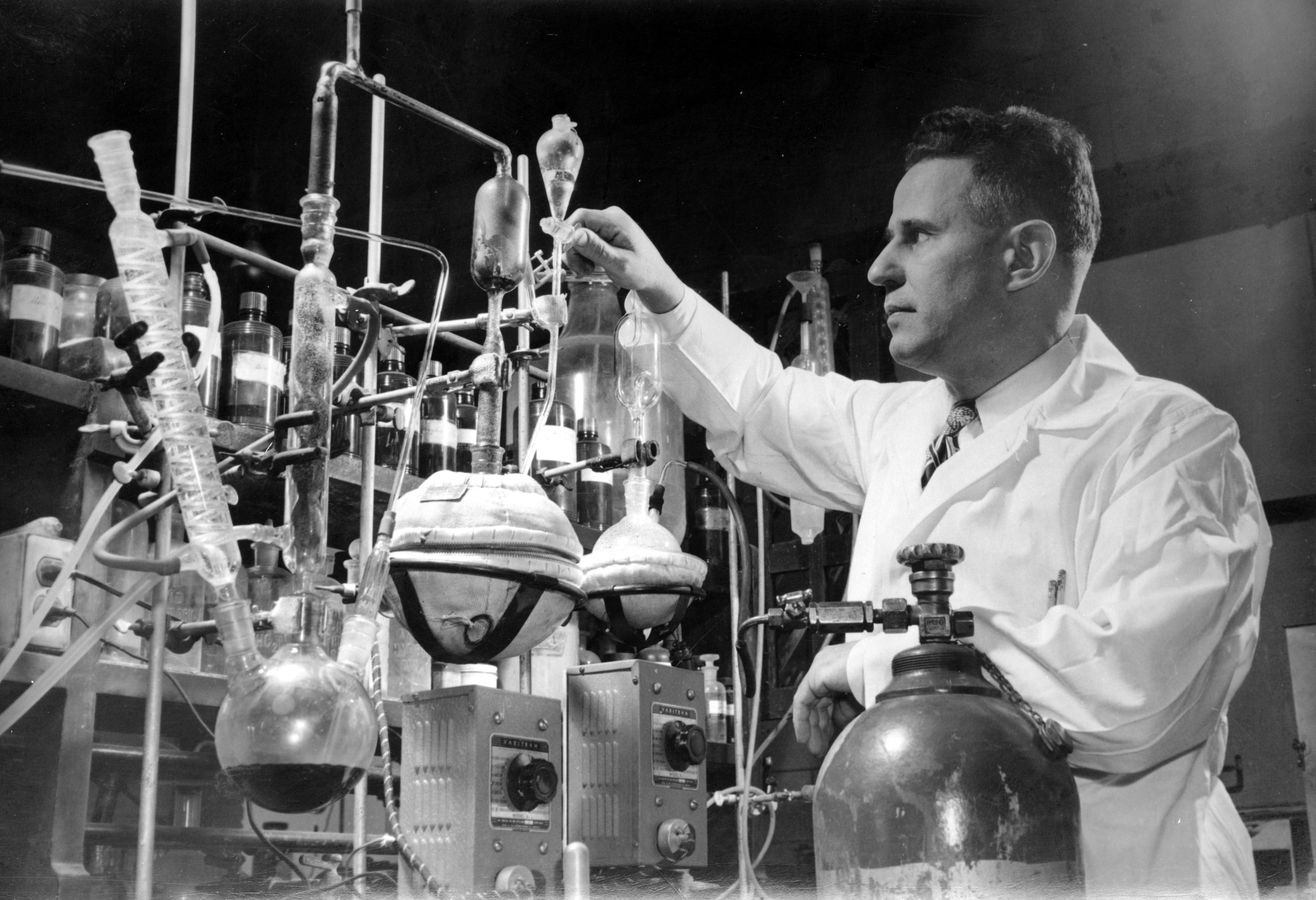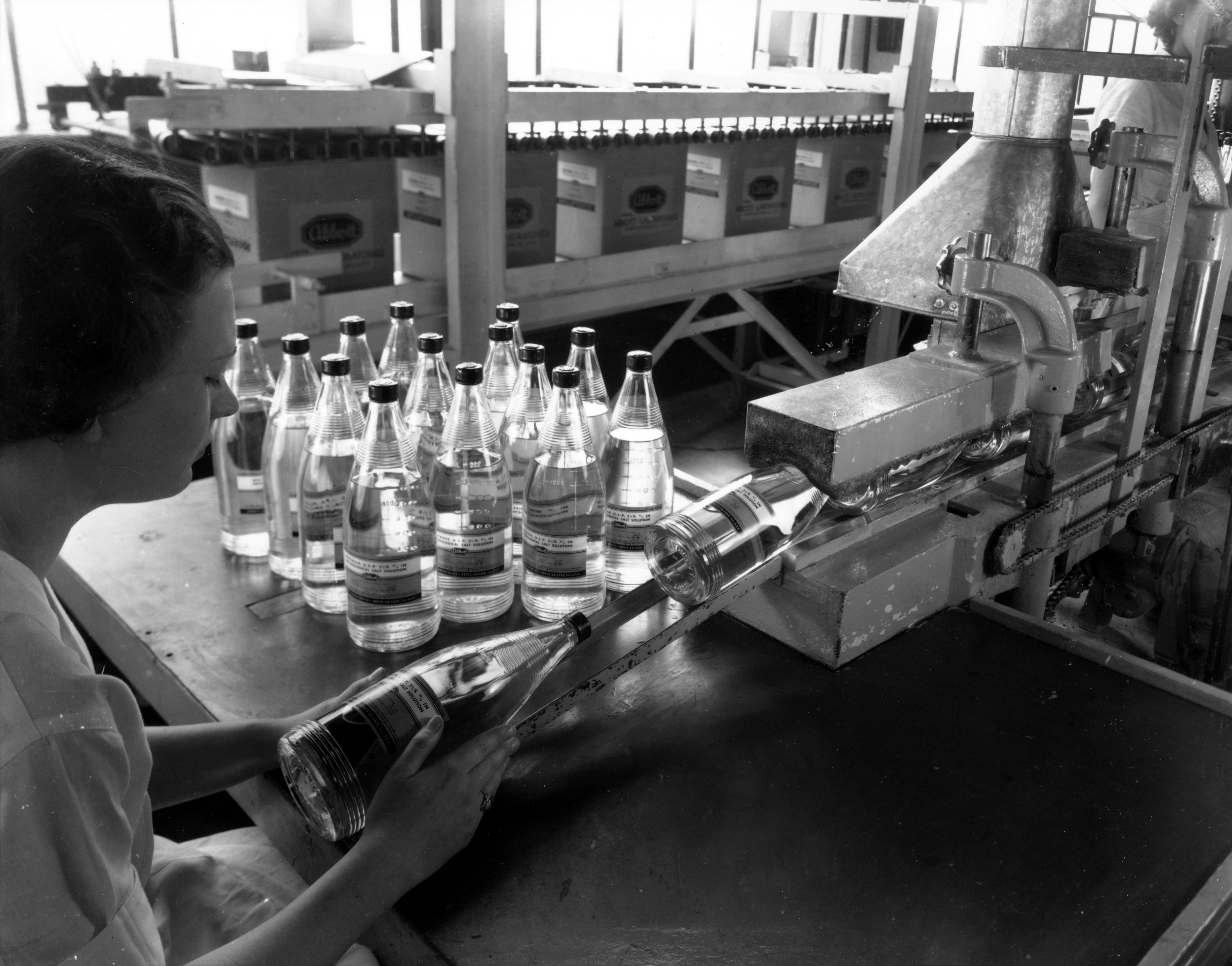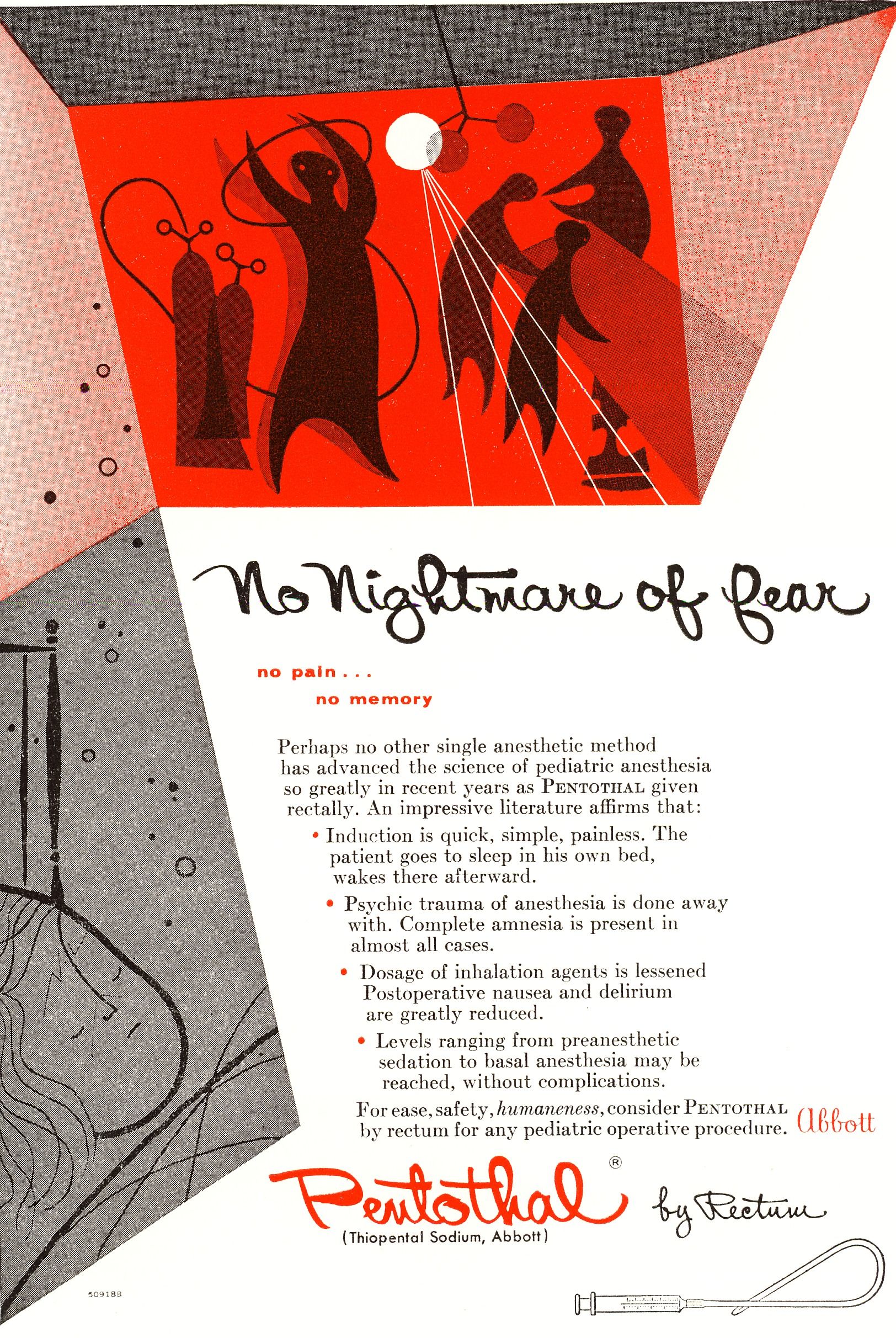A Gentler Anesthetic: Dr. Volwiler, Dr. Tabern and Sodium Pentothal

Dr. Tabern in the lab. Images courtesy The Wood Library-Museum of Anesthesiology.
The collaboration of Dr. Ernest Volwiler and Dr. Donalee Tabern at Abbott Laboratories produced several new sedative and anesthetic compounds that contributed significantly to better medical and surgical treatments throughout the world. Key among these was the discovery of Sodium Pentothal® in 1936.
The two scientists were seeking a substance which could be injected directly into the blood stream to produce unconsciousness. Pentothal had several advantages over other anesthetics. Induction was smooth, free of muscle twitching, and did not result in frightening psychic effects. Recovery was swift with little or no postoperative nausea. Pentothal was also safer to handle than gaseous compounds.
Few agents in medicine have played such an outstanding role in improving the well-being of patients.

Image courtesy The Wood Library-Museum of Anesthesiology.
Over the course of three years, Dr. Tabern and Dr. Volwiler screened over 200 compounds to arrive at thiopental sodium (trademarked “Sodium Pentothal®”). The chosen compound was a sulfur-bearing analogue of Nembutal®, a successful oral sedative-hypnotic, also developed by Drs. Volwiler and Tabern.

Image courtesy The Wood Library-Museum of Anesthesiology.
Sodium Pentothal only caused a few minutes of sedation (it leaves the bloodstream quickly), so it was followed up with a gaseous anesthetic, such as nitrous oxide. It became one of the most widely used anesthetics in the world.
Thousands of wounded soldiers during World War II owe their life to Sodium Pentothal. It was injected either on the battlefield or on the way to field hospitals to ease pain and shock.